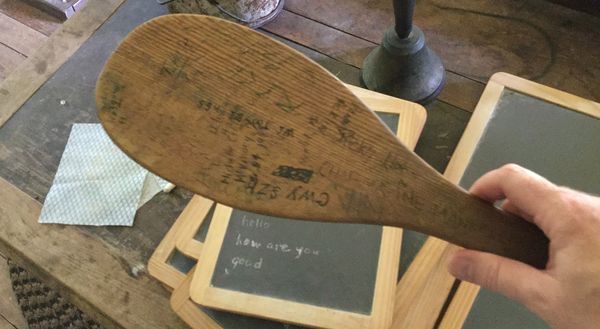The debate on disciplinary measures in Australian classrooms has gained momentum, drawing the attention of parents, educators, and scholars. They are discussing the effectiveness of implementing ‘old-school’ methods to tackle disruptive behavior among students.

This discussion was sparked by a senate inquiry into classroom behaviors, which recommended a return to traditional disciplinary approaches to effectively address the issue.
The proposed guidelines, now available nationwide, advocate for teaching students fundamental behaviors such as entering classrooms, sitting properly, and asking questions respectfully. Desks are suggested to be arranged in rows facing the teacher, promoting a structured learning environment. Along with this, students are encouraged to practice ‘super walking,’ a method aimed at promoting orderly movement throughout the school premises. These measures are designed to instill discipline and foster a conducive learning atmosphere.
Research conducted by the Australian Education Research Organisation (AERO) reveals that teachers spend a significant amount of their time, around 20%, addressing disruptive behavior in classrooms. Dr. Jenny Donavan, CEO of AERO, emphasizes the importance of explicitly teaching students appropriate behavior and highlights the correlation between classroom conduct and academic success.
Former teacher-turned-CEO, Dr. Donavan, stresses the importance of consistency in teaching and practicing these behaviors throughout a student’s educational journey. These skills are essential components of effective classroom management.
Parents have also voiced their opinions on the matter, with some attributing the problem to inadequate discipline at home. Others support the reintroduction of strict disciplinary measures in schools, seeing it as a necessary step in addressing the issue of disrespect and unruliness among students.
Adam Voigt, a former principal, also weighs in on the debate, acknowledging the complexity of the issue. He emphasizes the need for consistency across schools and cautions against relying solely on punitive measures. Voigt advocates for a balanced approach that incorporates modern teaching methods alongside traditional discipline.
While the debate continues, it is evident that there is no one-size-fits-all solution to addressing disruptive behavior in classrooms. The key lies in finding a balance between modern teaching techniques and traditional disciplinary measures. It is crucial to foster a supportive learning environment that encourages respect and responsibility among students. As educators, parents, and policymakers navigate this challenging terrain, collaboration and open dialogue will play a vital role in shaping the future of education in Australia.





